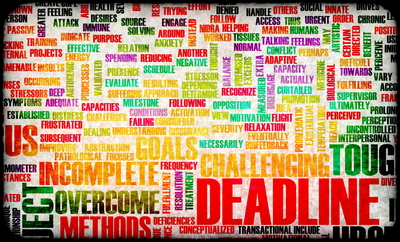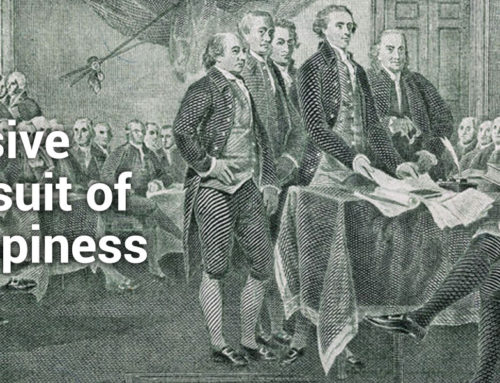Successfully performing each of the three phases of the Performance Trilogy® requires different attributes (i.e. talent and skills) during each phase. In STILE Point #15, we listed the universal attributes of leadership required during Phase 1, the strategy phase, where leaders change things. As in a chemical reaction, this requires activation energy to break existing bonds to allow the reaction to take place. In today’s STILE Point, we discuss the universal attributes of management required during Phase 2. In Phase 2, the manager’s role is to “lead from the middle” to build confidence among his/her team with the ability to execute the strategy developed in Phase 1 to produce results. This requires controlling the reaction to produce the desired products. In many ways, the attributes required are at opposite poles from the leadership attributes. While the leaders mission is to change things, the manager’s mission is to standardize to make things work. In an upcoming STILE Point, I will complete this discussion on Leadership attributes with the universal attributes of coaching. I will then sum it all up with a discussion on the wisdom of teams in ensuring that all the critical attributes of leading, managing and coaching are present during the three phases of any initiative.
In STILE Point #2, the Three Phase Leadership Framework™ was introduced providing an integrated view of the role a manager must play and the actions he/she must take to build confidence among his/her team with the ability to execute the strategy to produce results. In this STILE Point, we will discuss the universal attributes needed to ensure that the appropriate management actions are taken. Only when your team develops confidence in your ability to execute can strategy be successfully implemented. These critical attributes are conscientiousness, organization, and critical thinking.
Conscientiousness – The motivation and discipline to consistently produce results
Woody Allen was famously quoted as saying that “80% of success is just showing up”.
While on the surface this seems like a joke, I believe there is a lot of hidden meaning to this expression. A universal attribute of excellent managers is their discipline and consistency in “showing up”. The role of managers is to control processes and projects (as opposed to leaders whose role it is to lead people). Once a new change process is created in phase 1, the manager’s job in phase 2 is to control all the variables to make that process work to produce results.
Conscientious managers plan ahead, delegate responsibly, pay attention to detail, and follow up in a disciplined way to ensure that processes and projects are proceeding according to plan. In a future STILE Point on performance management, I will be discussing the 5 critical steps to ensure that strategy is being properly executed. It involves translating strategy into an execution plan with specific performance objectives and monitoring those objectives in a disciplined way.
Conscientious managers understand the importance of rigorously following policies and procedures and establish key performance indicators to ensure consistent quality and uniformity across the organization. A common mantra of these managers is “what gets measured, gets managed”. This kind of attention to detail is universally present in conscientious managers. I always looked for this attention to detail in my technical project managers, delivering high quality reports on time and on budget. This indicated to me that the person had the potential to become a technical group leader and eventually a higher-level manager.
Punctuality and preparedness are additional traits of conscientious managers. They show a great deal of respect for their own and others’ valuable time and always seem to be prepared (see the next section on organization). I will admit to being fairly undisciplined earlier in my career and as reflect on it now, it was probably the reason for being passed over for promotion on a few occasions. Recognizing this weakness, I gravitated towards turnaround assignments that required new transformational strategies and dramatic change management actions. Once the organization was back on its feet, I passed it on to more a disciplined manager.
There is a certain irony in the fact that it is the very qualities of a conscientious manager that oftentimes prevents him or her from properly executing a newly developed strategy that requires change. It is uncomfortable to have to change a system or process that is working for the sake of a new untried initiative. After all, products and services still need to be delivered despite the disruptive changes being requested. I often describe the process as trying to change a flat tire while the car is still moving! I will address the solution to this irony in an upcoming STILE Point on the wisdom of teams.
Organization – The skills and habits needed to simultaneously manage multiple events
Newly appointed managers often feel overwhelmed by the amount of responsibility they have acquired and the work needed to be done to stay on top of things. Technical staff accustomed to focusing on a selectively few subjects suddenly find themselves overwhelmed with tens to hundreds of “events”. Making a successful transition from technical expert to manager requires awareness that there are not enough hours in the day to play an active role in every item that comes across your desk. The quicker that one learns how to prioritize and delegate (i.e. get organized) the faster they will absorb the responsibilities of the job and execute responsibly.
Newly appointed managers find out quickly that the scarcest resource they have to manage is their own time. Being organized is often equated to managing your time. The term “time management” is a misnomer as we all know that time cannot be managed. The minutes and hours of every day will pass according to schedule regardless of our actions. A better way to view being organized is to manage the events (or tasks) that we are involved in and the information we are required to process. In a typical day, most managers are whipsawed from one event to another without a lot of time to spend on any one of them. In addition, they are responsible for processing an enormous amount of information that comes across their desk. Fortunately, methods and tools have been developed to help managers cope with the volume of events and information to be processed and acted upon. If you are still using the same methods and tools to manage events and information that you used 10 years ago, I assure you that you will not be able to keep up with the speed of your colleagues that have acquired the latest organizational tools.
The short overview of the latest organizational tools involves two critical steps, effective prioritizing and efficient processing. In his book, First Things First, Steven Covey provides an excellent tool for prioritization. He characterizes all events and information in a two-dimensional matrix: those that are important and those that are urgent. The first priority is to address all those events and information that are both urgent and important. These are events that you must tackle or information you must process immediately. It is up to you to determine the importance of any event or piece of information in all aspects of your life not just work. I consistently advise managers to list the top ten most important priorities in their life and to determine how much time they allocate to each one on a weekly basis. The results of this exercise is revealing and often shocking. In their professional work environment I insist that they make sure that their annual performance objectives are close to 100% aligned with their strategy and they allocate a majority of every workday on advancing these objectives. While this seems intuitively obvious, I have rarely seen this practiced.
The second priority is those events that are important but not urgent. These events are the most neglected and in many ways the most important for effective prioritization. If you reflect on this category, it represents those events and information that are important but do not have to be done right away. In time however, they will eventually move into the important and urgent category. The more that you can tackle important events and information before they become urgent, the more on top of your job you will be and the less stress you will cause yourself and those who need to support you. This requires a planning discipline and the ability to avoid procrastination. For example, most managers list family as a highly important priority, but when evaluating how much time they spend with their family on a weekly basis they fall way short of expectations. The excuse that they have too much work to do is a poor one when one adds up all of the time they spend on non-important and non-urgent activities that have little to do with important work activities (a quick check on the time spent on answering unimportant phone calls and emails will quickly prove my point).
The third and fourth priorities, urgent but not important and not urgent and not important are the categories that are the major time wasters and once identified can really free up ones time. Lest you interpret the above exercise as leading to all work and no play, let me offer you a different point of view to think about, “only the organized can loaf”. By only focusing on the important (including recovery and relaxation time) and urgent priorities, you will experience less stress and more freedom to pursue those activities that really count.
Once you have completed step one and prioritized your workload you can then focus on step two, processing that workload in an efficient manner. Bear in mind that prioritization is a never-ending process and you must reprioritize regularly. Even when you have identified all the important events that you need to pay attention to (both urgent and non urgent), there is still an enormous amount of work to be done. Despite how good a memory you may have, when you get to a managerial level, the number of events you need to stay on top of and amount of information you need to process is still daunting. You have probably figured out those traditional tools such as to do lists and calendars are no longer sufficient to manage all the important events and information in your life. I highly recommend reading John Allen’s book on Getting Things Done. It is a systematic, no nonsense approach to efficiently acquiring, processing, and storing information, and retrieving it when you need it.
A sure sign that a person is overwhelmed with his job and not utilizing the latest tools is when you get a request to resend an email, to extend the date of a deliverable, or an apology for being a bottleneck in reviewing a report. The problem is not a lack of time but a lack of clarity on the actions needed to produce the desired outcomes. Allen’s approach is twofold; capture all of the information and events that you need to manage in a trusted system outside your mind that you know you can come back to regularly, kind of like an external hard drive. And disciplining yourself to make front-end decisions about all of the inputs that you let into your life so that you will always have a plan for next actions that you can implement at any moment.
It is a waste of time and highly stressful to be thinking about something that you make no progress on and fearing that you have forgotten something important. When you have a trusted system that stores all of your important information with the ability to retrieve it whenever you wish, you then can free up your mind (or your available RAM) to have the ability to dedicate 100% of your attention to events or information of your choosing with no distraction. This was a giant leap in my level of awareness and helped me tremendously in becoming more organized, getting a lot more done with less effort. It is quite liberating to be able to take on new commitments knowing that you have the time available based reviewing your entire workload.
Critical Thinking – The skills needed to consistently make good decisions
Thomas Huxley is quoted as saying “science is simply common sense at its best, that is, rigidly accurate in observation, and merciless to fallacy in logic. The irony of this quote is that scientists and engineers oftentimes are enamored with expert opinions and objective data while ignoring the intuitively obvious. This has led to a more famous quote by Voltaire that “Common sense is not so common”, pointing out the lack of critical thinking that goes into most decisions. Despite the best-laid plans, invariably things never seem to go according to plan. When executing, a critical success factor for managers is to make a high percentage of good decisions. It is the collective decisions made each day that determine the success of an organization over time.
By critical thinking, I mean the ability to choose the best possible alternative after weighing both the positives and negatives of a decision. More often than not managers are faced with choosing between the lesser of two evils. As scientists and engineers we are trained not to develop conclusions without first obtaining all of the data. While this rule is essential in a technical context, managers rarely have the luxury of having all the information they would like when making decisions. Too often, technical managers have difficulty making decisions with limited data and procrastinate. This rarely leads to better decision-making. In his book Blink, Gladwell makes a convincing argument that the first decision that comes into ones mind is most often the best one. That instinctual thinking is not capricious but based on the brain’s ability to process both consciously and unconsciously the some total of all your experience (be sure to read STILE Point # 13 on the importance of self awareness).
My decision-making improved dramatically when I considered both the immediate outcome of a particular decision and the longer-term consequences of the decision on the people involved. Early in my career, the most important decision criteria for me were to ensure an immediate success of the task at hand regardless of the longer-term consequences. Over time I developed an attitude that when making a tough decision, more often than not it is better to be kind than to be right. While this may seem counter intuitive at first, I have found that I have been much more satisfied with the results.
As an example, I had to approve a very expensive decision to bid a large government contract made by one of my managers. I was convinced that we didn’t have much of a chance of winning and that the labor cost we would incur would be very detrimental to our bottom line. After much debate, I approved the bid decision. My rationale was that the manager was so enthusiastic about the contract and so motivated to write a good proposal that the long term consequences of turning him down and de-motivating one of my more talented managers outweighed the short term hit to our bottom line. You will never find this kind of decision making in any course on managing proposals. Much to my surprise we actually one the contract, but even if we had not, the decision was the correct one in my mind.
[hr]
Dr. Tony Graffeo is the president of Graffeo & Associates, a global consulting company founded in 2007 that provides technology executives and R&D managers consulting and training on Strategic Planning, Performance Management, and Leadership Development.
Dr. Graffeo has over 35 years experience in R&D management, serving as Vice President of R&D for two internationally recognized Science, Technology, and Innovation organizations; Battelle Memorial Institute and Arthur D. Little. He was also one of the founders and Executive Vice President of Biodevelopment Laboratories, a contract R&D Company serving the pharmaceutical and biotechnology industries.



